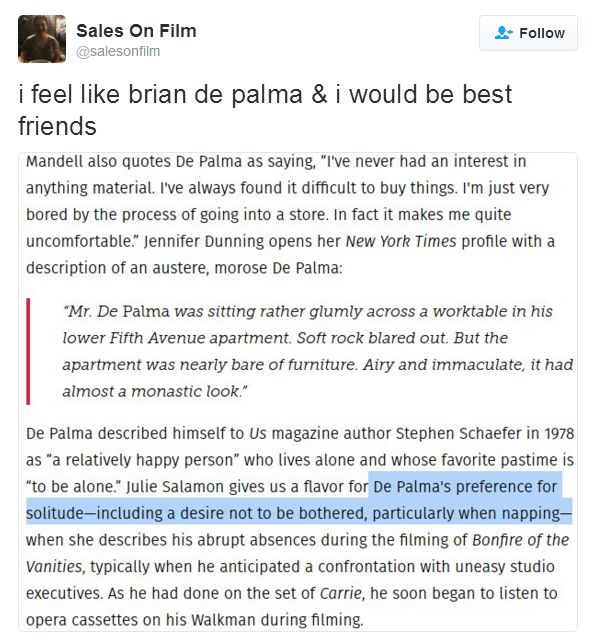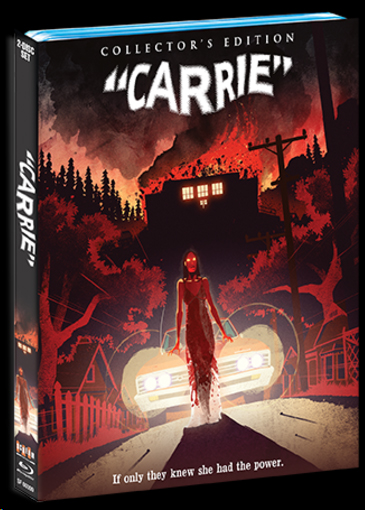'NEON DEMON' REVIEWS OFTEN MENTION DE PALMA
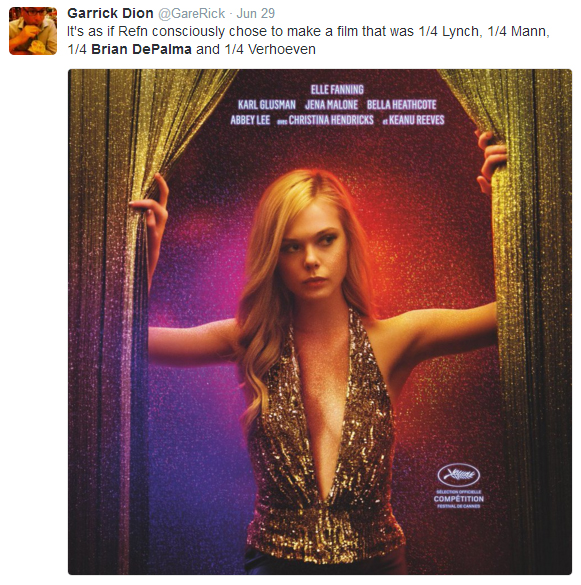 Corey Craft, Arts Bham
Corey Craft, Arts Bham"Earlier this week I saw the documentary De Palma, a feature length interview with the great director Brian De Palma, whose many films [include] Carrie, Scarface and The Untouchables. It’s a terrific watch for film fans, but most notably, one is struck by De Palma’s detail-oriented craft and complete control. Every shot, camera movement and actor’s blocking is motivated by a larger artistic purpose, even as his films delve into some outright sleazy subject matter from time to time.
"Now readers are probably wondering what this all has to do with the latest provocation from Danish director Nicolas Winding Refn. I saw The Neon Demon right after De Palma. They seemed to be appropriate bedfellows: a movie about a filmmaker who walks the fine line between art and trash, and then a movie that hopefully does that itself. Instead, the deficiencies of The Neon Demon were thrown into stark relief. Nicolas Winding Refn, it turns out, is no Brian De Palma."
Drew McWeeny, HitFix
"I’ll be the first to admit that I am drawn to filmmakers who use cinema as a way of pushing buttons, and I am a fan of the outrageous and the extreme. When I saw De Palma, the new documentary about Brian De Palma and his filmography, it sent me scrambling to watch a number of his older films again. They are so familiar at this point, so well-worn, that it surprised me to see how new they still feel when I took a step back. The next day, I went to a screening of the latest film from Nicolas Winding Refn, and the back-to-back timing of the two films made me laugh. More than anything, this feels like Refn working in the genre that De Palma had largely to himself in the late ’70s and early ’80s before getting relegated to mere late-night Cinemax fodder."
Andrew O'Hehir, Salon
"Any number of movies have been made about the depravity of Los Angeles and the moral vacuum of the illusion industries at that city’s heart. It’s virtually a genre of self-loathing all to itself, from Billy Wilder’s Sunset Boulevard to Sofia Coppola’s The Bling Ring. Nicolas Winding Refn’s fashionista horror film The Neon Demon, which is something like the bastard offspring of Brian De Palma and David Cronenberg, with a dollop of David Lynch on the down-low, definitely belongs to that tradition. But The Neon Demon is a striking and unusual L.A. story in several respects, not least because most of it occurs indoors."
Stephen Silver, Splice Today
"The Neon Demon is a tale of jealousy and bitterness set in L.A.’s fashion world, and has more than a little bit in common, thematically and stylistically, with Darren Aronofsky’s Black Swan. There are continuing motifs involving blood, large panthers, stylized violence and skinny models with visible ribcages. I could see Brian De Palma watching The Neon Demon and thinking the director should’ve taken it down a notch."
Edward Douglas, New York Daily News
"Over the past few years, Refn has been given a lot of free reign as a cinematic craftsman in the vein of David Fincher, Stanley Kubrick and Brian De Palma. But viewers will quickly realize that the real stars of Refn's film are his cinematographer Natasha Braier and composer Cliff Martinez, whose beautiful shots and ambient score are often the saving graces of The Neon Demon. (Even Martinez's synth noodlings start to get tiring once you realize the movie isn't going anywhere you may have any interest in going.) As with many supermodels, The Neon Demon is gorgeous to the eye but ultimately quite vacant and shallow."
Beth Accomando, KPBS
"I love Refn’s work and seeing The Neon Demon right after seeing the documentary De Palma was perfect. Brian De Palma was a filmmaker dedicated to a particular vision and he crafted his film with great care. Refn has that same obsession with that sense of cinematic craft. Both directors make films that at their core also seem to be about the act of making a film."
Randall King, Winnipeg Free Press
"While the film has components of sex and violence, do not expect some kind of Brian De Palma-esque thriller. Refn is one for long, lingering takes and slow buildups, steeping the audience in the existential horror of it all. But as unsavoury as the material is — be warned there is a necrophilia scene that makes the pervy 1996 Canadian movie Kissed look like a Disney film — one can’t deny the sheer potency of Refn’s painstakingly composed images, even if the cumulative impact of it all leaves one feeling as empty as the glamourous amazons populating the screen."
 John McMartin, who had a brief but pivotal role as a political advisor in Brian De Palma's Blow Out, has died at the age of 86. Variety's Gordon Cox notes that McMartin's death "was attributed to cancer in a paid obituary announcement in the New York Times." McMartin was memorable in a brief scene near the beginning of Blow Out in which his character convinces Jack Terry to go along with the official story of the car crash. McMartin appeared in many roles on Broadway and television, as well as film. According to The Film Experience, McMartin appeared in three films with Robert Redford, including Alan J. Pakula's All the President's Men.
John McMartin, who had a brief but pivotal role as a political advisor in Brian De Palma's Blow Out, has died at the age of 86. Variety's Gordon Cox notes that McMartin's death "was attributed to cancer in a paid obituary announcement in the New York Times." McMartin was memorable in a brief scene near the beginning of Blow Out in which his character convinces Jack Terry to go along with the official story of the car crash. McMartin appeared in many roles on Broadway and television, as well as film. According to The Film Experience, McMartin appeared in three films with Robert Redford, including Alan J. Pakula's All the President's Men.
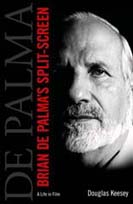
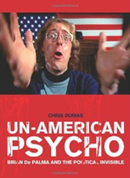

 On Friday,
On Friday, 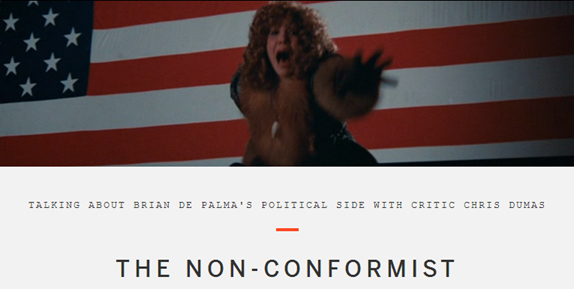

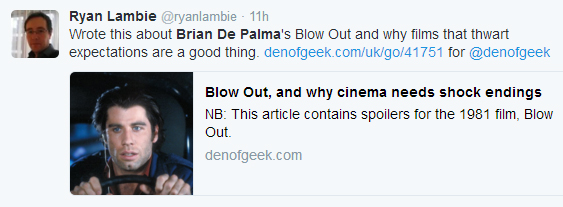
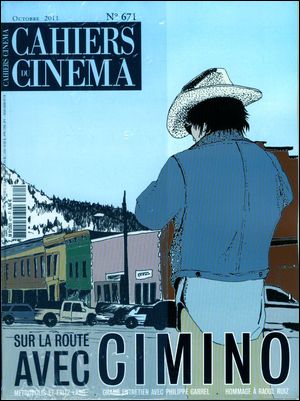 Michael Cimino passed away on Saturday. He was 77.
Michael Cimino passed away on Saturday. He was 77.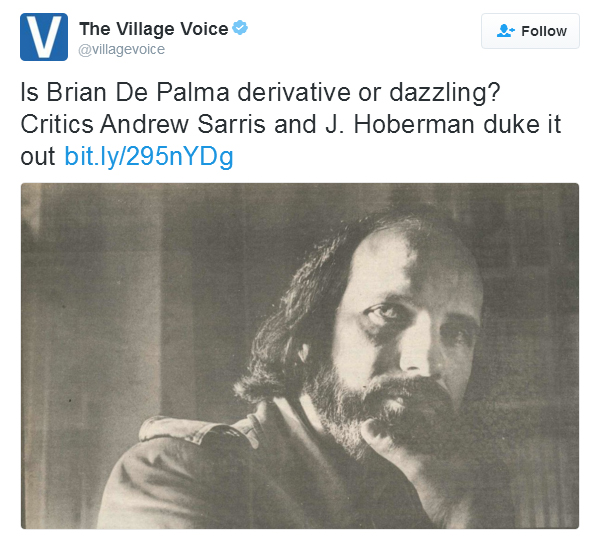
 At the
At the 